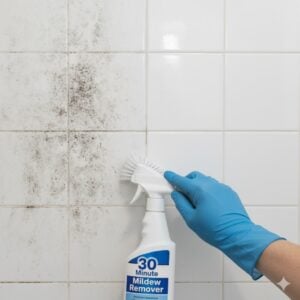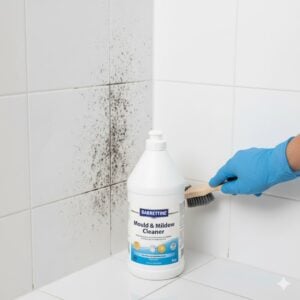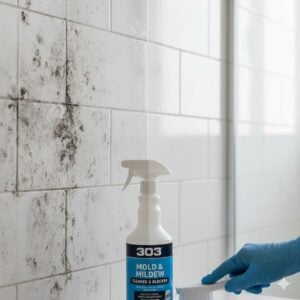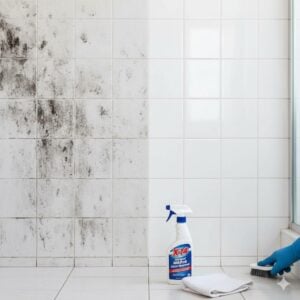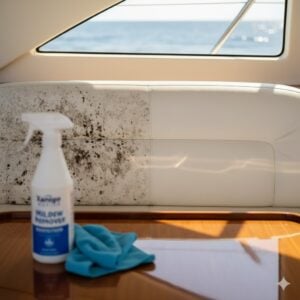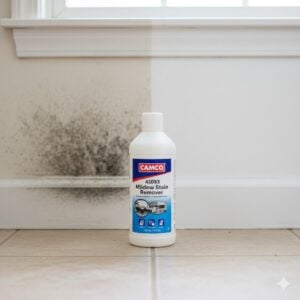Hello there! Today, we’re diving deep into the world of Black Mold Remediation Costs, a topic that might not cross your mind often, but when it does, it’s usually a cause for concern. Black mold is not only unsightly but also a health hazard, and its removal is essential for maintaining a safe and comfortable living environment. Understanding the costs and processes involved in black mold remediation can help you make informed decisions and ensure your home or workplace is free from these unwanted guests. Stick with us as we explore everything you need to know about the cost of black mold remediation, ensuring you’re well-informed and ready to tackle any mold challenges that come your way.
Table of Contents
Toggle#1 Understanding Black Mold
Understanding black mold is crucial for every property owner or resident in Abu Dhabi. Often referred to by its scientific name, Stachybotrys chartarum, black mold is a toxic fungus that thrives in damp, humid environments. Unlike other molds, black mold is particularly concerning because it produces mycotoxins that can lead to severe health issues, ranging from respiratory problems to neurological damage in extreme cases. This mold appears as dark black or greenish-black patches and can be found in areas of buildings where moisture levels are high, such as bathrooms, kitchens, and basements.
The growth of black mold is primarily fueled by moisture. Situations like water leaks, poor ventilation, and flooding can create an ideal environment for mold to flourish. In Abu Dhabi’s climate, with its high humidity levels, the risk of mold growth is significantly elevated, making it a pervasive issue in homes and commercial buildings. It’s not just the visible areas that are a concern; mold can also hide behind walls, under carpets, and in other unseen parts of a structure, making it a silent but dangerous presence.
One of the first steps in combating black mold is identifying its presence. A musty odor is often the first indicator of a mold problem. Physical signs include dark spots or patches on walls, ceilings, or floors. However, not all molds that appear black are Stachybotrys chartarum, so it’s important to have suspected areas tested by professionals. These experts can determine the type of mold and the extent of the infestation, which is critical in planning the remediation process.
The health implications of black mold exposure cannot be understated. Individuals with allergies, asthma, or compromised immune systems are particularly susceptible to the effects of black mold. Symptoms can include coughing, sneezing, sore throat, irritation of the eyes and skin, and in severe cases, more serious respiratory conditions. Long-term exposure has been linked to more significant health problems, making early detection and removal vital.
Preventive measures play a key role in controlling mold growth. These include maintaining a dry environment, ensuring good ventilation, fixing leaks promptly, and using dehumidifiers in areas prone to high humidity. Regular inspections of potential mold hotspots can help catch and address mold growth early, preventing it from becoming a larger, more costly issue to resolve.
#2 Factors Influencing Black Mold Remediation Cost
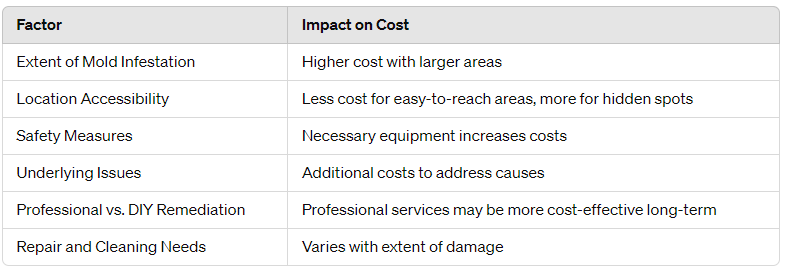
When delving into the factors influencing black mold remediation costs, it’s pivotal to understand that the expense can vary widely depending on several variables. First and foremost, the extent of the mold infestation plays a significant role in determining the overall cost. Small, localized areas of mold are generally less costly to remediate compared to widespread mold throughout a building. The size of the affected area directly impacts labor, time, and materials needed for effective mold removal.
Location within the property also significantly affects remediation costs. Mold found in easily accessible areas, such as on the surface of walls or ceilings, can be less expensive to address. In contrast, mold hidden behind walls, under floors, or in HVAC systems requires more invasive and complex procedures to remove, driving up the cost. These challenging locations often necessitate the use of specialized equipment and techniques, further increasing expenses.
Safety measures for mold remediation can also add to the cost. Black mold removal often involves the use of protective gear, containment barriers to prevent mold spores from spreading to other parts of the property, and air filtration devices to maintain air quality. These safety protocols are essential to protect both the remediation team and the occupants of the building but can significantly impact the overall cost.
Another factor to consider is the cause of the mold growth. If the mold is a result of an underlying issue, such as persistent leaks, poor ventilation, or structural defects, these problems must be addressed to prevent future mold growth. The cost of fixing these underlying issues should be factored into the total remediation expense.
The choice between professional remediation and DIY efforts can also influence costs. While DIY may seem less expensive upfront, improper removal techniques can lead to recurring mold issues, potentially increasing long-term costs. Professional remediation, on the other hand, offers the expertise and equipment necessary to thoroughly remove mold and mitigate the risk of future growth, often making it a more cost-effective solution in the long run.
Lastly, the level of cleaning and repair needed after mold removal can vary. Some situations may require only minor repairs and cleaning, while others might necessitate substantial renovation and replacement of materials, such as drywall, flooring, or furniture, affected by mold.
#3 DIY vs. Professional Remediation
Deciding between DIY and professional mold remediation is a crucial choice that homeowners and property managers face when dealing with black mold. This decision not only affects the cost but also the effectiveness and safety of the mold removal process.
DIY mold remediation can be tempting due to its perceived immediate cost savings. For minor mold issues, such as small patches in easily accessible areas, DIY can be effective. This approach often involves using over-the-counter mold removal products and following online guidelines. However, the DIY route carries significant risks. Without the proper knowledge, tools, and safety measures, individuals can inadvertently spread mold spores, fail to address the root cause of the mold, or even expose themselves to harmful toxins. Furthermore, DIY efforts may not fully eradicate the mold, leading to recurrent growth and potentially higher costs in the long run.
On the other hand, professional mold remediation offers a comprehensive solution. Professionals are equipped with specialized equipment, such as HEPA vacuums and air scrubbers, and employ advanced techniques to safely and effectively remove mold. They also have the expertise to identify and rectify the underlying causes of mold growth, such as moisture issues, thereby preventing future infestations. Professional remediation teams adhere to strict safety protocols to protect themselves and the inhabitants of the building, ensuring that mold spores are contained and removed without contaminating other areas.
The cost of hiring professionals might seem higher initially, but considering the potential health risks and the likelihood of recurring mold issues with DIY attempts, professional remediation often proves to be more cost-effective in the long term. Additionally, professional services typically include a post-remediation assessment, which verifies the thoroughness of the mold removal and provides peace of mind that the property is safe for occupancy.
Choosing between DIY and professional mold remediation ultimately comes down to the scope of the mold issue, the risks involved, and the long-term effectiveness of the remediation efforts. For extensive or hidden mold infestations, or if there are concerns about the health impacts of mold exposure, professional remediation is the recommended approach.
#4 Average Costs and Budgeting Tips

Navigating the financial landscape of black mold remediation involves understanding the diverse factors that shape the overall cost. A critical first step for homeowners and property managers is grasping the average costs associated with mold remediation services in Abu Dhabi. These costs can vary significantly based on the scale of the mold infestation, its location, and the complexity of the removal process. Generally, minor mold issues in accessible areas may cost less, while extensive mold infestations requiring structural repairs can escalate costs substantially.
Budgeting for mold remediation is more than just allocating funds for the removal process itself. It should also account for the potential costs of addressing the source of moisture that led to the mold growth, such as plumbing repairs or improving ventilation. Furthermore, after remediation, there may be additional expenses for restoring or replacing materials like drywall, paint, and flooring affected by the mold and the remediation process.
To effectively budget for mold remediation, it’s advisable to obtain multiple quotes from professional services. This not only provides a clearer picture of the expected costs but also offers insight into the scope of work proposed by different providers. When evaluating these quotes, it’s essential to consider what is included in the price, such as post-remediation testing, which verifies that the mold has been successfully removed and that the air quality is safe.
Another financial consideration is the potential impact on property value. Untreated mold can significantly decrease a property’s market value and deter potential buyers. Investing in professional mold remediation can preserve or even enhance property value by ensuring a safe, healthy living environment.
For those concerned about the cost, some insurance policies may cover mold remediation, especially if the mold growth is the result of a covered peril, such as water damage from a burst pipe. It’s worthwhile to review your insurance policy and discuss coverage options with your provider. In cases where insurance does not cover the costs, exploring financing options or payment plans offered by remediation companies can provide financial flexibility.
Planning for unforeseen expenses is also a prudent strategy. Setting aside a contingency fund can help cover additional costs that may arise during the remediation process, ensuring that the project can proceed without financial constraints.
#5 Insurance and Mold Remediation
Insurance coverage for mold remediation is a nuanced aspect that property owners must navigate with care. Understanding when and how insurance might cover mold removal costs is pivotal, as it can significantly alleviate the financial burden of the remediation process. Generally, homeowners’ insurance policies may cover mold damage if it is a result of a “covered peril.” Covered perils typically include sudden and accidental incidents, such as water damage from a burst pipe, but not issues arising from neglect or gradual deterioration, like continuous humidity.
The first step in determining if your mold situation is covered by insurance is to thoroughly review your insurance policy. Specifics vary significantly between policies, with some offering mold coverage as an add-on or rider. If mold remediation coverage is included, note the coverage limits and the deductible. Coverage limits for mold can be considerably lower than other types of damage, and understanding these limits is essential for setting realistic expectations on the financial assistance your policy will provide.
In cases where mold remediation is covered, documenting the damage thoroughly is crucial. Take detailed photographs and notes of the mold growth and any related damages. This documentation will be invaluable when filing a claim with your insurance company. Additionally, retaining records of any related repairs, such as fixing a leak that led to the mold, can further substantiate your claim.
When filing a claim, act promptly. Most insurance policies require claims to be filed within a specific timeframe after the damage occurs. Delaying the process could jeopardize your ability to receive coverage. Communicate with your insurance provider to understand the required steps and paperwork needed to proceed with the claim.
Navigating an insurance claim for mold remediation often involves an assessment by an insurance adjuster. This professional will evaluate the mold damage and determine if it falls within the scope of your policy’s coverage. It’s beneficial to have a mold remediation professional provide a detailed report and estimate for the remediation work, which can be presented to the adjuster to support your claim.
For scenarios where insurance coverage is not an option, exploring other financial avenues becomes necessary. Some mold remediation companies offer financing plans or can recommend third-party financing options. These alternatives can provide a manageable way to cover the costs of mold removal and necessary repairs.
#6 Preventing Mold Recurrence
Preventing mold recurrence is a critical aspect of maintaining a healthy, safe living environment after remediation. Understanding the conditions that foster mold growth is the first step towards effective prevention. Mold thrives in moist, humid conditions, making moisture control the cornerstone of mold prevention strategies. Ensuring adequate ventilation in high-moisture areas such as bathrooms, kitchens, and laundry rooms is essential. This can be achieved through the use of exhaust fans, opening windows when weather permits, and maintaining HVAC systems to promote air circulation throughout the property.
Humidity levels within a property should ideally be kept between 30% and 50%. Hygrometers, tools that measure humidity, can be used to monitor indoor air moisture levels. If necessary, dehumidifiers can be employed in areas prone to high humidity to help maintain optimal moisture levels. Fixing leaks promptly is another crucial preventive measure. Water leaks from pipes, roofs, or around windows not only provide a direct water source for mold growth but can also contribute to elevated humidity levels. Regular inspections of plumbing systems, roofs, and building exteriors can help identify and repair leaks before they lead to mold problems.
Improving drainage around the building can further prevent water accumulation that could seep into basements or crawl spaces, areas often susceptible to mold growth. Ensuring that the ground slopes away from the building foundation and installing proper gutters and downspouts can significantly reduce the risk of water infiltration.
In areas where mold growth has previously occurred, applying mold-resistant products can provide an additional layer of protection. These include mold-resistant paints and building materials treated to resist mold. Such products can be particularly useful in renovations or repairs following mold remediation, offering long-term resilience against mold recurrence.
Regular cleaning and maintenance routines also play a vital role in mold prevention. Dust and dirt can supply nutrients for mold growth, while clutter can inhibit airflow and create moist, stagnant conditions. Regular dusting, vacuuming, and decluttering, especially in areas with limited airflow, can mitigate these risks.
For properties in Abu Dhabi or similar climates where high temperatures and humidity are common, special attention should be given to air conditioning systems. These systems can help control indoor humidity levels but can also become mold growth sites if not properly maintained. Regular servicing, including cleaning or replacing air filters and ensuring AC units drain correctly, is essential to prevent mold from establishing within the system.
#7 Maximizing the Efficiency of Your Mold Remediation Efforts
Maximizing the efficiency of mold remediation efforts is key to ensuring that the process is both effective and cost-effective. The first step towards efficiency is selecting the appropriate remediation technique for the specific mold situation. This decision should be based on the type of mold, the extent of the infestation, and the materials affected. For instance, porous materials with deep mold penetration may require removal and replacement, whereas non-porous surfaces might be cleaned and treated. Engaging a professional mold assessment can provide guidance on the most effective techniques, reducing the risk of recurring mold issues and unnecessary expenses.
Scheduling plays a critical role in the efficiency of mold remediation. Conducting remediation during dry seasons can facilitate faster drying times and reduce the likelihood of mold recurrence during the process. Moreover, coordinating remediation efforts with building or renovation schedules can minimize disruptions to living spaces or business operations, effectively reducing the indirect costs associated with the remediation process.
Another key aspect of maximizing efficiency is addressing the underlying moisture issues that led to mold growth. Without rectifying these root causes, mold is likely to return, leading to repeated remediation efforts. This means repairing leaks, improving ventilation, and installing dehumidification systems as part of the remediation project. By integrating these corrective actions, the remediation effort not only removes existing mold but also prevents future growth, enhancing the long-term efficiency of the investment.
Preventive measures are equally important in maximizing remediation efficiency. Implementing mold-resistant materials during repairs, using paints with mold inhibitors, and maintaining an optimal indoor humidity level can all contribute to making the environment less conducive to mold growth. Additionally, regular inspections and maintenance of known risk areas can help identify potential mold issues before they become extensive, reducing the scope and cost of future remediation efforts.
Efficiency in mold remediation also extends to the choice of contractors. Selecting experienced, certified professionals ensures that the remediation is done right the first time, avoiding the costs and hassle of follow-up treatments. It’s advisable to seek multiple quotes and references to find a service provider that offers a good balance of cost, expertise, and reliability.
Why Choose Bio On for Your Black Mold Remediation Costs?
Bio On stands as the premier solution for mold remediation needs due to its unparalleled expertise and dedication to customer satisfaction. With a team of certified professionals, Bio On utilizes the latest technology and methods to effectively address mold issues, ensuring a thorough and safe removal process. The approach is not just about immediate remediation but also about implementing long-term solutions that prevent future mold growth, saving time and resources in the long run.
Offering round-the-clock consultation services, Bio On provides peace of mind and accessibility, making it easy for clients to obtain expert advice and services whenever needed. This commitment to excellence and client support makes Bio On the go-to expert for mold remediation, prioritizing health and safety above all.
Conclusion
Addressing black mold with precision and efficiency is critical for maintaining a healthy, safe environment. Through understanding mold, its causes, and the most effective remediation strategies, individuals can make informed decisions that protect their properties and well-being. It’s essential to tackle mold issues proactively, employing professional expertise when necessary to ensure comprehensive removal and prevention. Bio On offers such expertise, providing reliable, effective solutions for mold challenges. For those facing mold concerns, reaching out to Bio On via the Whatsapp contact button ensures access to free consultations, guiding you towards a mold-free living or working space with confidence and peace of mind.








